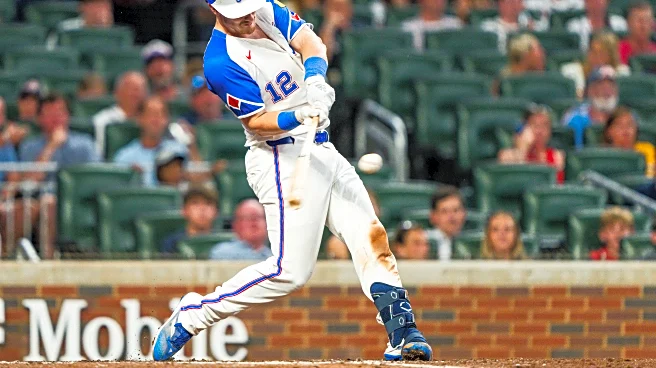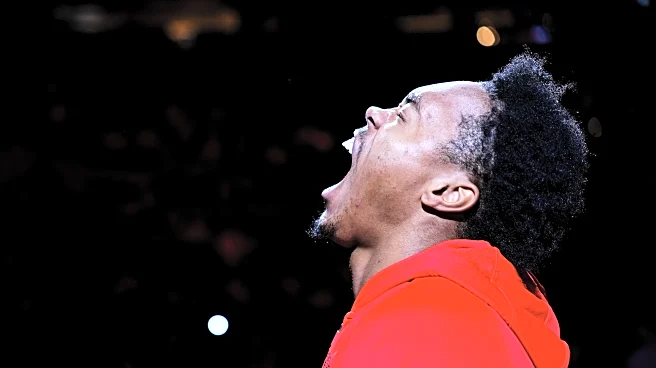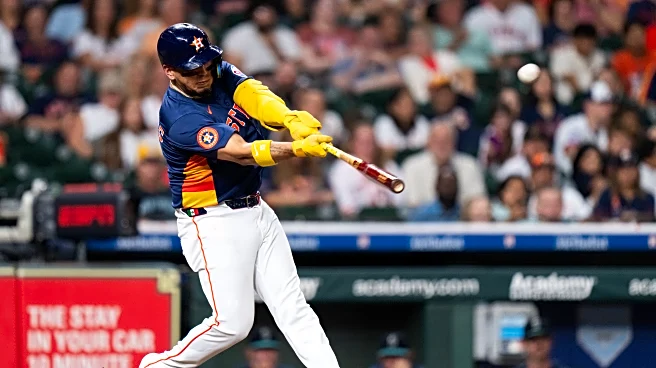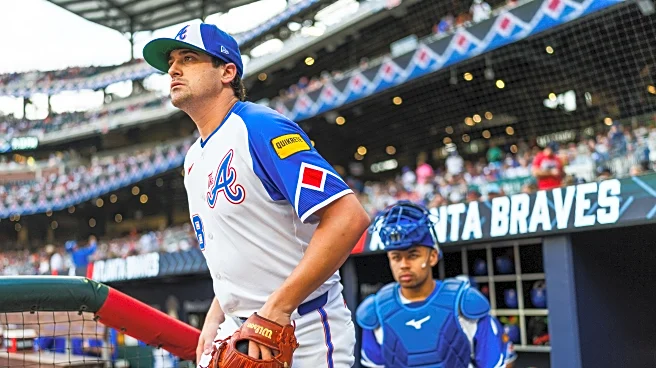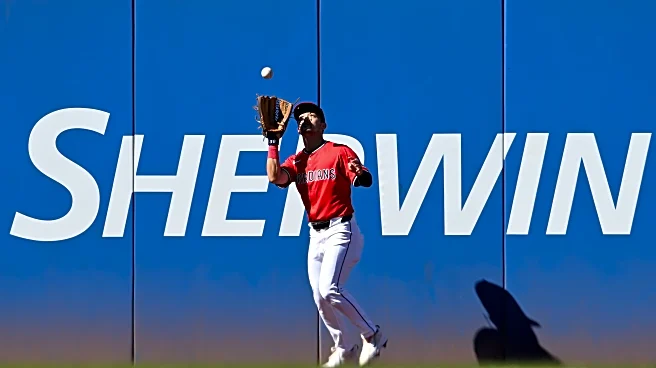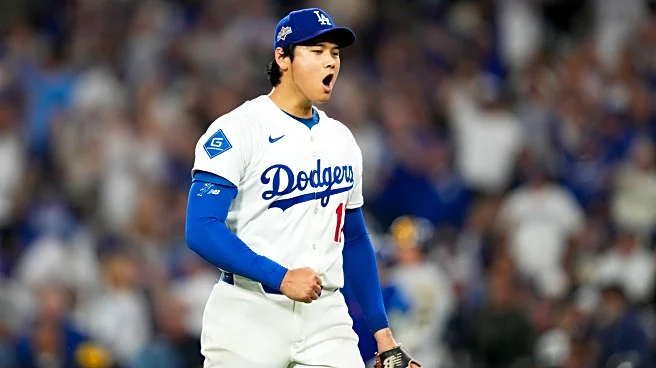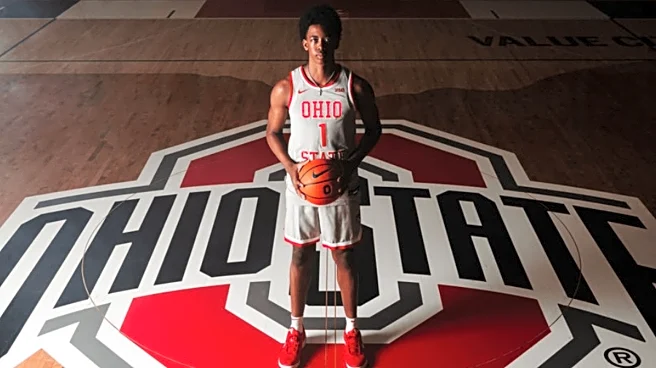What's Happening?
Tyler Soderstrom, originally drafted as a catcher by the Oakland Athletics in 2020, is now a finalist for the Gold Glove Award as a left fielder in the American League. Soderstrom began the 2025 season
as the Athletics' starting first baseman but transitioned to left field in late April to accommodate rookie Nick Kurtz. Despite having no prior experience in the position, Soderstrom has impressed with his defensive skills, earning a nomination alongside Cleveland's Steven Kwan and Texas' Wyatt Langford. The Athletics' general manager, David Forst, praised Soderstrom's athleticism and rapid adaptation to the new role, expressing optimism about his future as a left fielder.
Why It's Important?
Soderstrom's successful transition to left field highlights the importance of adaptability and athleticism in professional sports. His nomination for the Gold Glove Award underscores the potential for players to excel in new positions, which can be crucial for team dynamics and strategy. For the Athletics, Soderstrom's versatility provides valuable flexibility in their lineup, potentially enhancing their competitive edge. This development also serves as an inspiring example for other athletes facing positional changes, demonstrating that dedication and skill can lead to recognition and success.
What's Next?
If Soderstrom wins the Gold Glove Award, it would mark a significant achievement in his career, validating his transition and hard work. The Athletics may continue to develop his skills in left field, potentially making him a key defensive asset in future seasons. Other teams might take note of his success, considering similar positional shifts for their players. The outcome of the award could influence Soderstrom's role and responsibilities within the team, as well as his market value in the league.
Beyond the Headlines
Soderstrom's journey from catcher to left fielder raises questions about the evolving nature of player roles in baseball. It challenges traditional views on specialization and suggests a trend towards more dynamic and versatile athletes. This shift could impact training programs, scouting strategies, and player development across the league, encouraging teams to prioritize adaptability alongside traditional skills.


